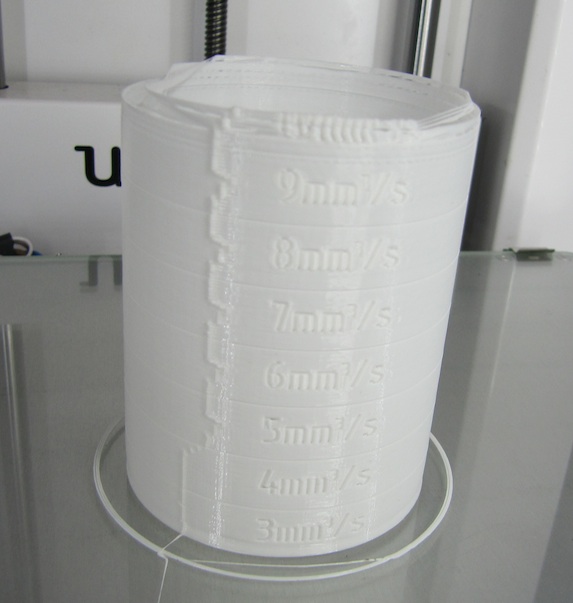The biggest difference with the UM1 is that the extrusion degrades gradually; as the speed (and hence pressure) builds, so the printer gradually under-extrudes more and more, but in a fairly continuous way. When printing at 15mm³/s, you might only be getting 11 or 12mm³/s of plastic delivery, but since it does that quite smoothly and continuously, the print still holds up and keeps going until it finally strips the filament from trying to push it so hard.
Whereas on the UM2, once you reach the stall torque for the motor, it starts to slip back. This totally stops extrusion for a short time, and so kills the structural integrity of the print immediately.

















.thumb.jpeg.0b7a05eafc09add17b8338efde5852e9.jpeg)
Recommended Posts
Top Posters In This Topic
52
47
38
37
Popular Days
Feb 27
30
May 6
28
Mar 6
24
Mar 3
24
Top Posters In This Topic
illuminarti 52 posts
gr5 47 posts
schafe 38 posts
Nicolinux 37 posts
Popular Days
Feb 27 2014
30 posts
May 6 2014
28 posts
Mar 6 2014
24 posts
Mar 3 2014
24 posts
Posted Images
Dim3nsioneer 557
Thanks guys for the information.
It seems my UM1 had quite a good day today...
Why I did the test on an UM1? To compare the two. It might help future users to understand that the UM1 is not the 'worse' model (and of course also not the other way round).
If you have a closer look at the two cylinders you see that there are some underextrusion issues starting from around 8mm^3/s after the the letters (where the printer slows down). However the extrusion recovers before the circle is completed. The material flow did not interrupt up to 15mm^3/s.
It was printed at 230°C with DiamondAge PLA Cherry red.
Link to post
Share on other sites